Last time, you have cast on the required number of stitches on your needle with the Italian tubular method. Then what happens next?
After the strictly speaking casting-on, you need to work two set-up rows, called often tubular rows.
There are three major cases. The first two are for projects worked back and forth and the last one concerns those worked in the round.
CASE 1: You ended the cast-on with a KNIT stitch.
As explained in the tutorial, you made a knot to secure the last stitch. Now turn your work.
N.B. Some knitting handbooks could say the contrary of the following explanations but I checked that they give the same result. This would be a topic of another post!
Since you finished the cast-on with a knit stitch, the first stitch of wrong side rows is a purl stitch.
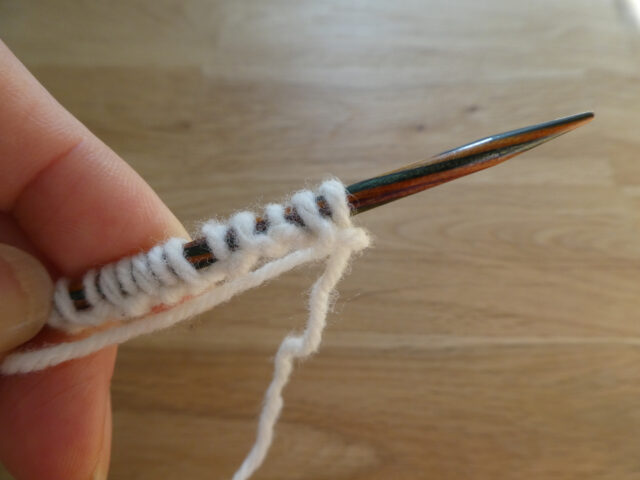
Purl this first stitch.
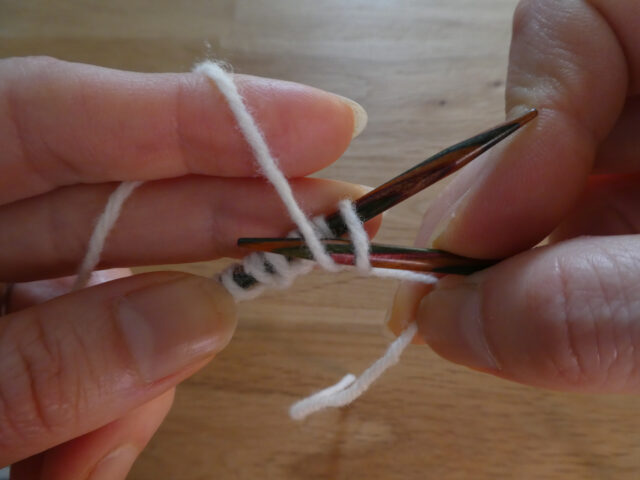
The next stitch is a knit stitch and all the knit stitches should be slipped with the yarn in the position where it would be if you knitted the stitch, that is with the yarn in back. So move your yarn to the back of your work and slip the next stitch purlwise.
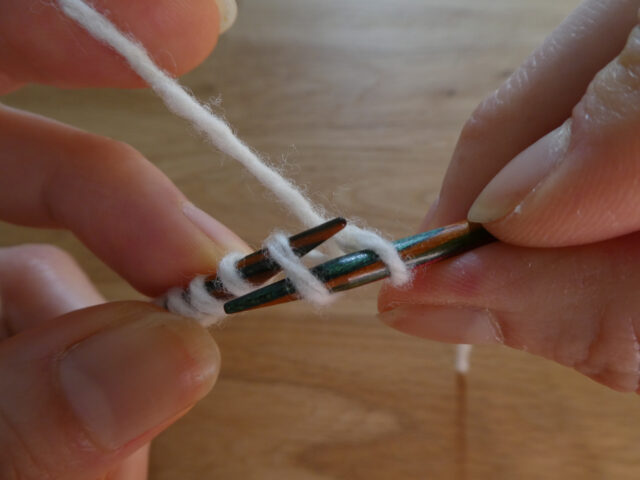
This is the principle of the tubular rows: Purl the purl stitches and slip the knit stitches with your yarn in back of your work. You need to bring your yarn as for 1×1 ribbing (in front for purl stitches and in back for knit stitches) but you work one stitch out of two.
Repeat these 2 steps and finish the first row with a purl stitch.
Turn your work again to the RS and you will do the same – purl the purls and slip the knits -, except for the first stitch which is, as we saw in the last post, an incomplete knit stitch.
Instead of slip it with your yarn in back, knit it.
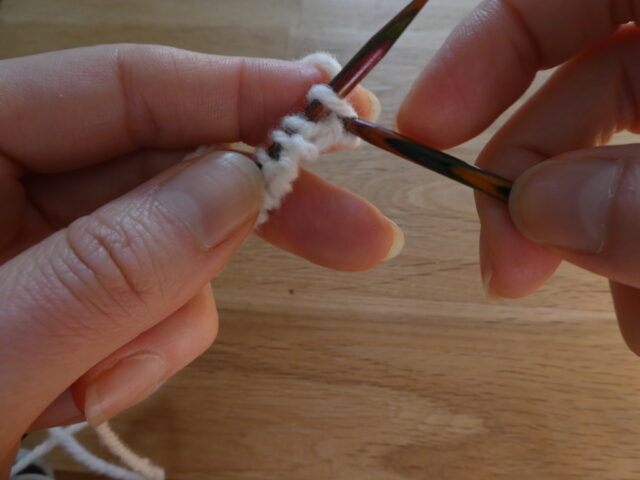
Then continue as before, purling the purl stitches and slipping the knit stitches with yarn in back. You can see that the purl stitches you are purling is the stitches slipped (unworked) in the previous row, and knit stitches are the stitches already worked.
After these 2 rows, you can start working ribbing. If it’s 1×1 ribbing, work as stitches appear, knitting the knits and purling the purls.
(I’ll explain how to transform 1×1 tubular cast-on into 2×2 ribbing in another post.)
I also made a video, you can find it here.
CASE 2: You finihsed the cast-on with a PURL stitch and your project is to be worked back and forth
It is a case unlikely to happen, but I’ll explain it anyway so you can see the principle of the tubular rows.
Since we finished the cast-on with a purl stitch, the first stitch of wrong side rows is a knit stitch.
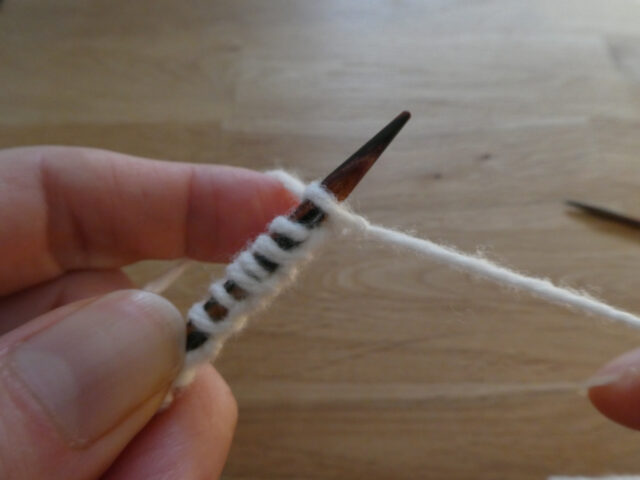
So knit this first stitch.
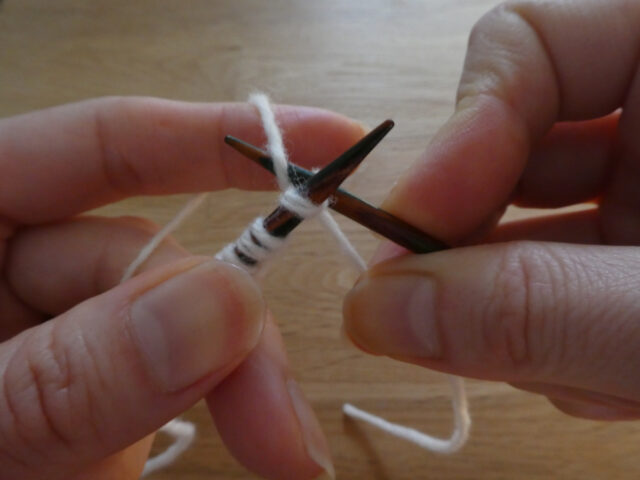
The second stitch is a purl stitch and it should be slipped with the yarn where it should be if you purled the stitch, that is with the yarn in front.
So bring the yarn to the front of your work and slip the purl stitch purlwise.
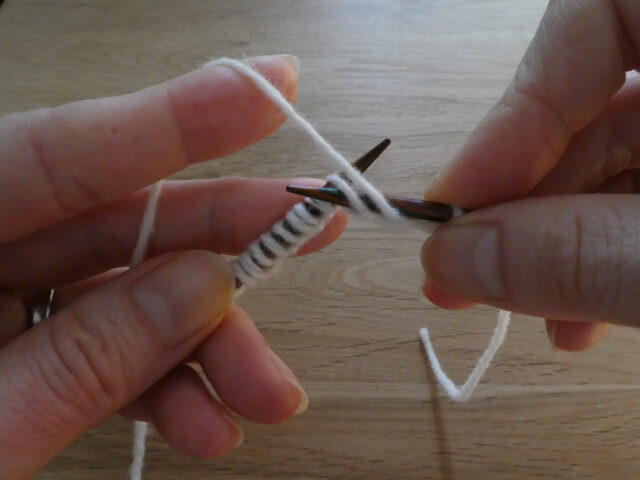
You can see that the principle of the set-up rows is the same for this case. Bringing your yarn to the back then to the front as if to work 1×1 ribbing, you work only one type of stitch (knit stitches here).
Repeat alternately these steps (k1, sl1 wyif) until 2 stitches remain at the end of the row, then knit 1 and purl the last stitch as it is an incomplete stitch.
In the next row too, you need to do the same. The first stitch is a knit stitch, so knit it and slip the next purl stitch with yarn in front and continue in this manner to the end of the row. And doing this, you can see that you knit the stitches you have slipped in the previous row and slip the stitches already worked.
After this second set-up row, you can start working 1×1 ribbing.
As for the last case, I uploaded a video.
CASE 3: projects worked in the round
For projects worked in the round, some books says to work the set-up rows back and forth, but you can join your stitches in the round directly after the casting-on. The biggest difficulty here is not twist your stitches, so please be extremely careful. I’m going to show you how to work the set-up rows in the round, using the magic loop.
Here we tied a knot and divided stitches onto two ends of the needle.
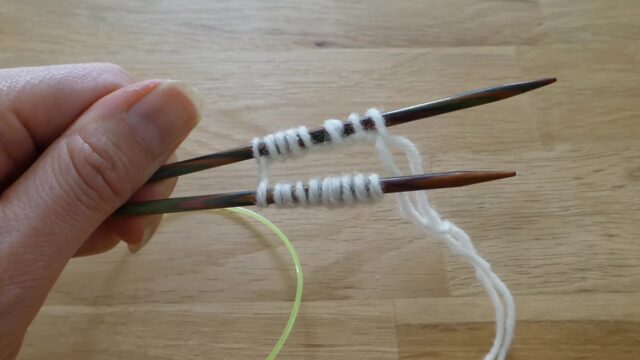
If you cast on stitches for a circular project, your last should be a purl stitch and the first stitch of the round is a knit stitch. So knit this knit stitch to securely join your stitches in the round.
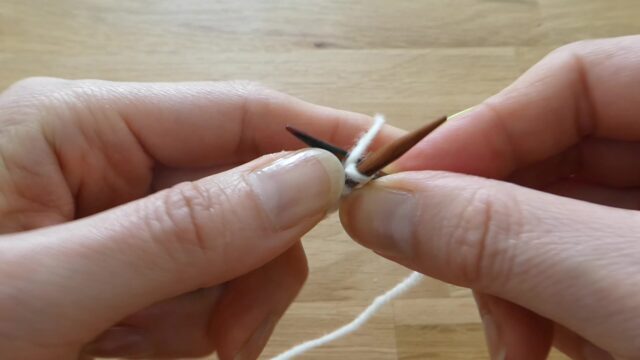
Then, slip the next purl stitch with yarn in front.
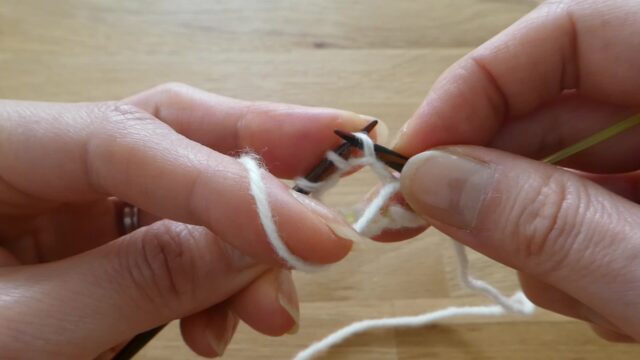
Repeat these two steps – knit the knits and slip the purls with yarn in front – to the end of the round. Does this remind you of something? Yes, the first set-up round is worked exactly as Case 2.
Here we have slipped the last stitch of the round with the yarn in front.
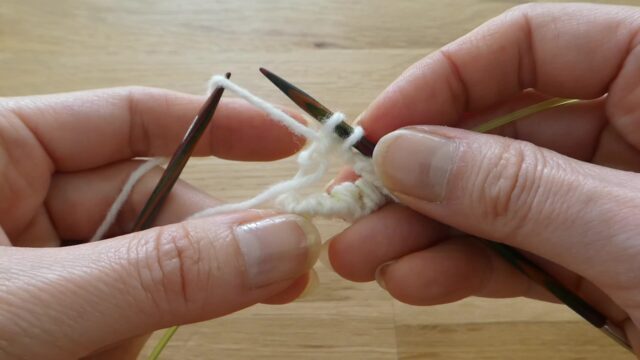
Then slide your stitches on your needle and get ready for the second round.
In Cases 1 and 2, we worked the second set-up row exactly as the first row, to work the stiches slipped in the previous row and leave the stitches already worked. Can you guess what to do in the second set-up round?
Yes, we need to do the opposite of the first round: the knit stitches are already knit so they should be left unworked, and the purl stitches should be purled. And the knit stitches should be slipped with your yarn in the position of knit stitches, in back of your work.
So slip the knit stitch already knit, with yarn in back.
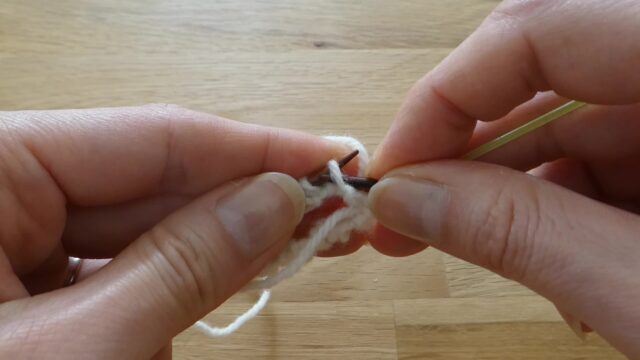
And purl the purl stitch.
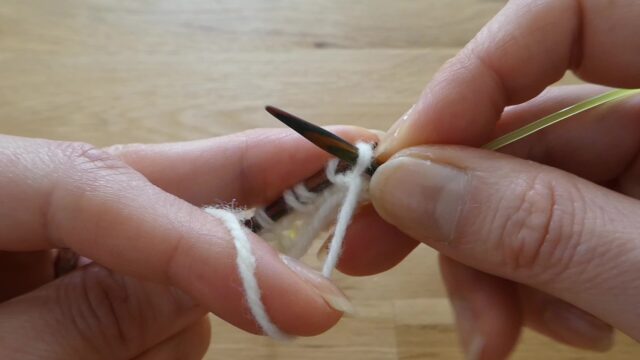
Repeat these steps to the end of the round.
After this second round, you can start to work ribbing!
Here’s the tutorial video for case 3.
The set-up rows/rounds are done but there are still a lot of things to talk about this cast-on. I’ll write posts little by little, please be patient with me 🙂
Do you find this post helpful? Please consider supporting me if you want to read more helpful posts. Thank you 💜
![]()

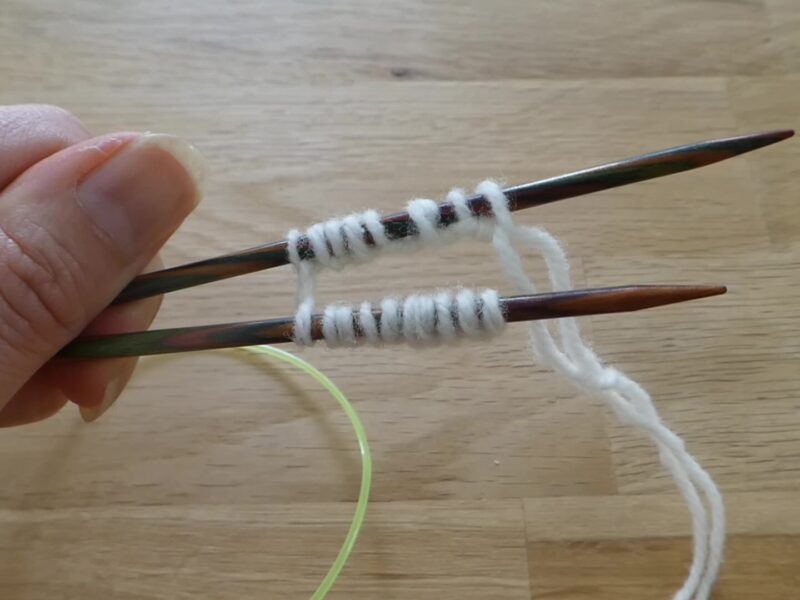
One thought on “Italian Tubular Cast-on 2”